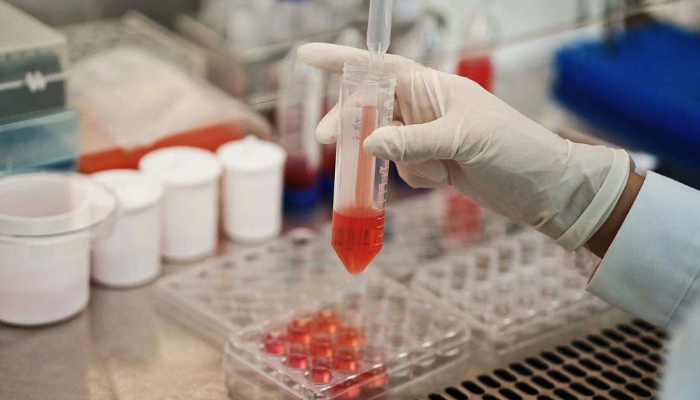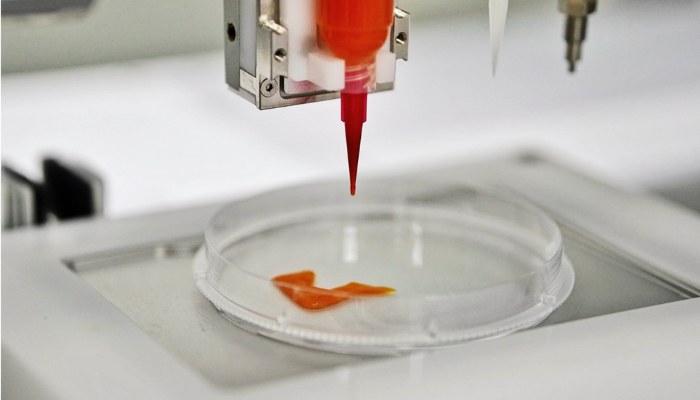One of the biggest difficulties presented by industrial agriculture involves the contradictions between the constantly growing scale of production on the one hand, and on the other, the capacity that existing infrastructure has for storing and distributing the food produced. Analyses vary concerning the exact amount of food that industrial agricultural systems waste, but a fairly good estimate is around one third. A much higher percentage of fruits and vegetables sent to market are wasted, when compared to meat; but then you also have to consider the quantity of inputs devoted to producing animal meat.
Of course, industrial meat production is severely damaging to the environment in many other ways, especially related to the pollution caused by animal waste. Meat’s carbon footprint, combined with the long-term future shortages anticipated because of growing global demand, have caused such a stir that for awhile it seems like all we were hearing about were new versions of meat. Perhaps more so than any other major facet of 3D printing, this sector of the field epitomizes the industry’s rapid trajectory from quirky newsmaker to venture capital darling: for instance, earlier this year, Israel-based company Redefine Meat raised another $29 million in its latest round of funding, which it used for international expansion; the company expects to hit U.S. stores in 2022.
It was only a matter of time, then, before we saw a Chinese 3D printing meat startup: certainly not the last, but apparently the first, of these, is Shanghai’s CellX, which just received another $4.3 million in investments. CellX is using the money for more R&D into its own particular niche it hopes to establish in the alternative meat game, 3D printed pork that combines tissue engineering and 3D printing to make a cultured meat version of pork. Like other cultured meat products,
We will explore CellX’s manufacturing process in more depth as we learn more. What it seems to consist of is the harvesting of cells from live animals – in this case, CellX uses China’s native black pig – which are then seeded into scaffolding molds. After the molds are incubated, the resulting tissue is 3D printed, resulting in a slab with a look, feel, and taste approximating that of raw meat fresh from the slaughterhouse, minus the slaughtering. CellX is also planning on working on a fish product, giving us a scaffolding-based competitor to the extrusion-based Vish to look forward to.
But the company’s pork product is what I think will really make its mark. For one, while it’s true that pork production is certainly less damaging to the environment in the ways described above than beef and probably less damaging to the environment than chicken, it’s also true that this is a bit like saying hybrid cars are less damaging to the atmosphere than conventional-engine vehicles. They’re less damaging now, but who knows how true that will be if/once everyone starts driving hybrid cars, at which point you will have also reinforced a culture of driving in a way you might not have had hybrid cars not existed, etc. The point is that whatever the case may be now, don’t expect it to be that way, necessarily, much longer.
All you have to do is imagine pork production increasing in response to beef and chicken production decreasing to envision how there’s no meat that, in the long term, won’t be subject to a paradoxical mix of overproduction and shortages. Another thing, however, simply has to do with the fact that pork is bacon, and people will give up lots of other things- lots of other meats, even! – before they’ll give up bacon. Veggie “fakin bacon” has been one of the most plausible alternative meats before the phrase “alternative meat” even really existed, so it’s easy to imagine this crossing over into the realm of bioprinted meat.
And finally, even more simply, it’s hard to imagine an easier shape to mass-produce with 3D printing than the beloved strip, so if CellX can get the flavors right, cornering the market on 3D printed pork could end up meaning cornering the market in general. China may not have much of a domestic market yet for alternative meat, but if the current era has one major theme to it, it’s that shortages hit anywhere at any time, so being China’s first domestically-produced cultured meat company also gives the company another huge edge. And in general, wherever you are on the planet, whatever anyone says they won’t try when things are plentiful, you can bet they’ll start rethinking things when someone says they were just at the store and they were all out of bacon.
Subscribe to Our Email Newsletter
Stay up-to-date on all the latest news from the 3D printing industry and receive information and offers from third party vendors.
You May Also Like
Hyliion CEO Thomas Healy on 3D Printing’s Role in the KARNO Generator
While the electric vehicle (EV) market faces an uncertain future, there’s no uncertainty about the fact that greenhouse gas emissions are drastically changing the climate on Earth. Thanks to its...
Attending the ASTM F42/ISO TC 261 Meetings: The Nitty-Gritty of Additive Manufacturing
I never thought I’d be so excited about an event focused on additive manufacturing (AM) standards, but here we are! When I learned that the recent biannual ASTM F42/ISO TC...
World’s Largest Polymer 3D Printer Unveiled by UMaine: Houses, Tools, Boats to Come
The University of Maine has once again broken its own record by unveiling the largest polymer 3D printer in the world. Surpassing its 2019 achievement, the new Factory of the...
Gorilla Sports GE’s First 3D Printed Titanium Cast
How do you help a gorilla with a broken arm? Sounds like the start of a bad joke a zookeeper might tell, but it’s an actual dilemma recently faced by...
































